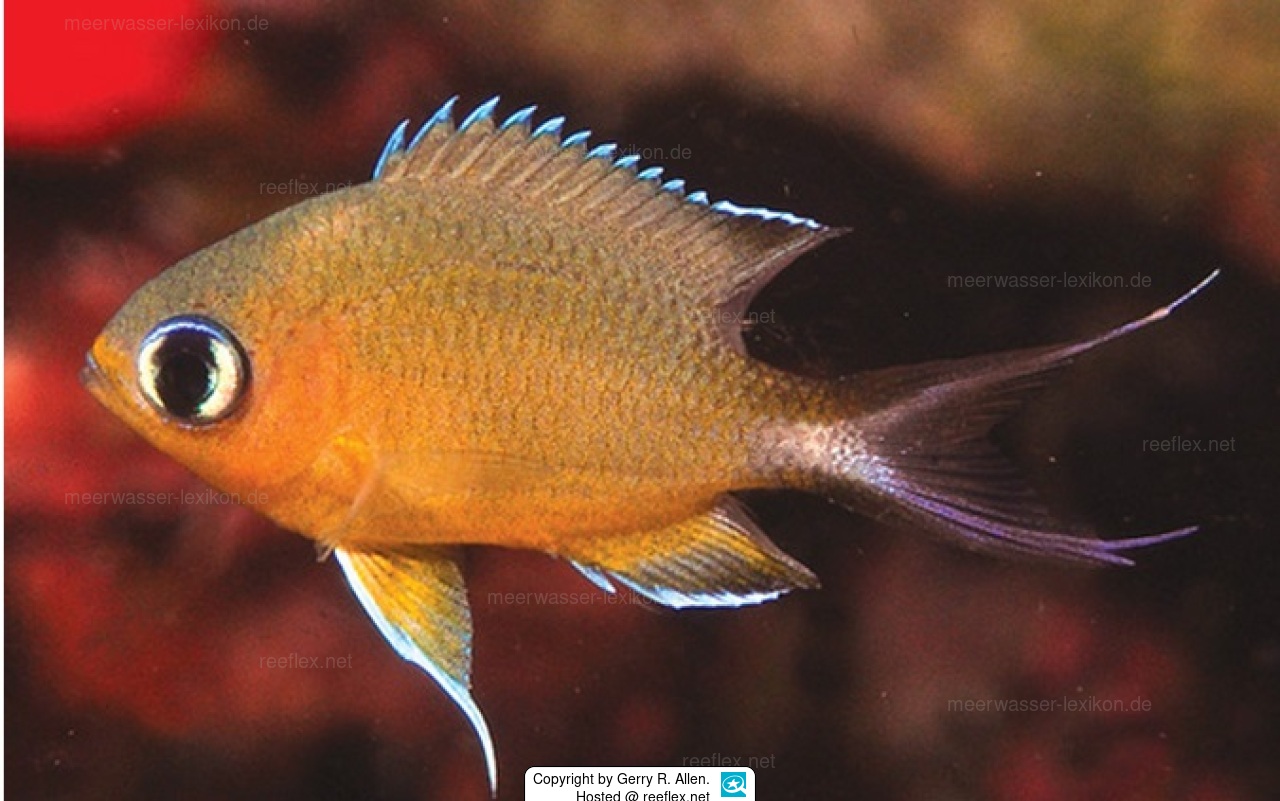Info
Allen & Erdmann, 2014
Very special thanks for the first photo of Chromis howsoni to Dr. Gerry Allen and Dr. Mark Erdmann, this photo was taken at Lusancay Islands, Papua New Guinea.
Pycnochromis howsoni is currently known only from Papua New Guinea at Milne Bay
(Nuakata, East Cape, Lawadi-Tawali area, Lusancay Islands, and Fergusson Island in the D’Entrecasteaux Group)
and Oro (vicinity of Tufi) Provinces. It has not been observed at other parts of Milne Bay Province (e.g. Misima,
Woodlark Island, Egum Atoll, Louisiade Islands, and Rennell Island), New Britain, New Ireland, Manus Island, Hermit and Ninigo Island, and Madang vicinity despite intensive survey efforts. The preferred habitat consists of
gentler slopes of coral-rich areas of highly sheltered lagoons and bays, but also on steep outer reef slopes where it
can be found in the vicinity of crevices and caverns. The depth range is about 2.2–65 m, but it is most commonly
encountered in approximately 6–20 m.
Acknowledgments
We are especially grateful to owner Craig Howson, Captain Gavin Graham, and the crew of True North, for
their gracious hospitality during the 2012 cruise to Papua New Guinea and continuing support of the first author’s
research activities. We also thank the Paine Family and Rob Vanderloos and his crew on the MV Chertan for hosting us for the follow-up expedition on which we were able to make detailed ecological and behavioural
observations. David Greenfield and an anonymous reviewer provided helpful comments.
Source: Journal of the Ocean Science Foundation
Classification: Biota > Animalia (Kingdom) > Chordata (Phylum) > Vertebrata (Subphylum) > Gnathostomata (Superclass) > Pisces (Superclass) > Actinopteri (Class) > Perciformes (Order) > Labroidei (Suborder) > Pomacentridae (Family) > Chromis (Genus) > Chromis howsoni (Species)
Very special thanks for the first photo of Chromis howsoni to Dr. Gerry Allen and Dr. Mark Erdmann, this photo was taken at Lusancay Islands, Papua New Guinea.
Pycnochromis howsoni is currently known only from Papua New Guinea at Milne Bay
(Nuakata, East Cape, Lawadi-Tawali area, Lusancay Islands, and Fergusson Island in the D’Entrecasteaux Group)
and Oro (vicinity of Tufi) Provinces. It has not been observed at other parts of Milne Bay Province (e.g. Misima,
Woodlark Island, Egum Atoll, Louisiade Islands, and Rennell Island), New Britain, New Ireland, Manus Island, Hermit and Ninigo Island, and Madang vicinity despite intensive survey efforts. The preferred habitat consists of
gentler slopes of coral-rich areas of highly sheltered lagoons and bays, but also on steep outer reef slopes where it
can be found in the vicinity of crevices and caverns. The depth range is about 2.2–65 m, but it is most commonly
encountered in approximately 6–20 m.
Acknowledgments
We are especially grateful to owner Craig Howson, Captain Gavin Graham, and the crew of True North, for
their gracious hospitality during the 2012 cruise to Papua New Guinea and continuing support of the first author’s
research activities. We also thank the Paine Family and Rob Vanderloos and his crew on the MV Chertan for hosting us for the follow-up expedition on which we were able to make detailed ecological and behavioural
observations. David Greenfield and an anonymous reviewer provided helpful comments.
Source: Journal of the Ocean Science Foundation
Classification: Biota > Animalia (Kingdom) > Chordata (Phylum) > Vertebrata (Subphylum) > Gnathostomata (Superclass) > Pisces (Superclass) > Actinopteri (Class) > Perciformes (Order) > Labroidei (Suborder) > Pomacentridae (Family) > Chromis (Genus) > Chromis howsoni (Species)







 Dr. Gerald (Gerry) Robert Allen, Australien
Dr. Gerald (Gerry) Robert Allen, Australien


























